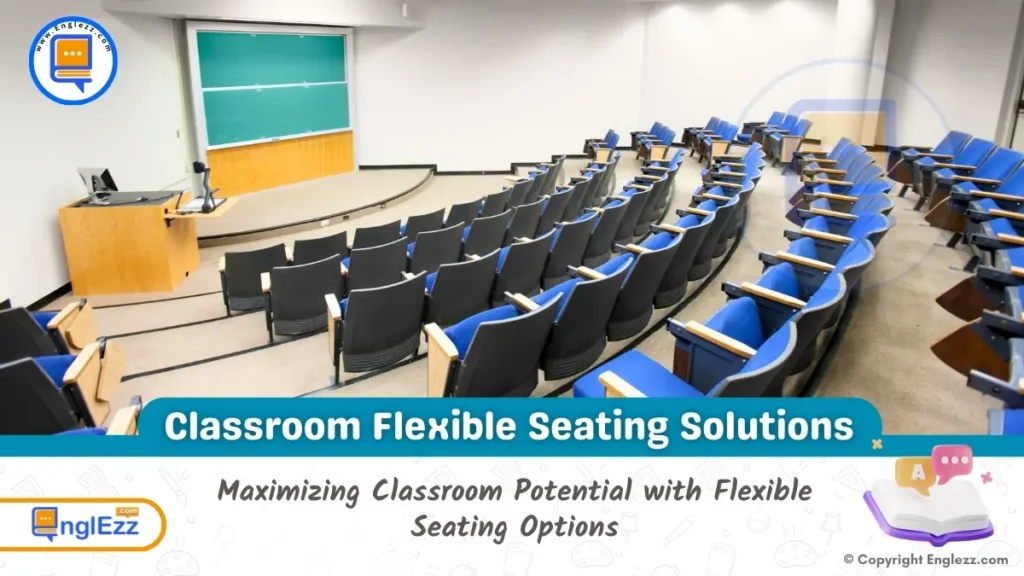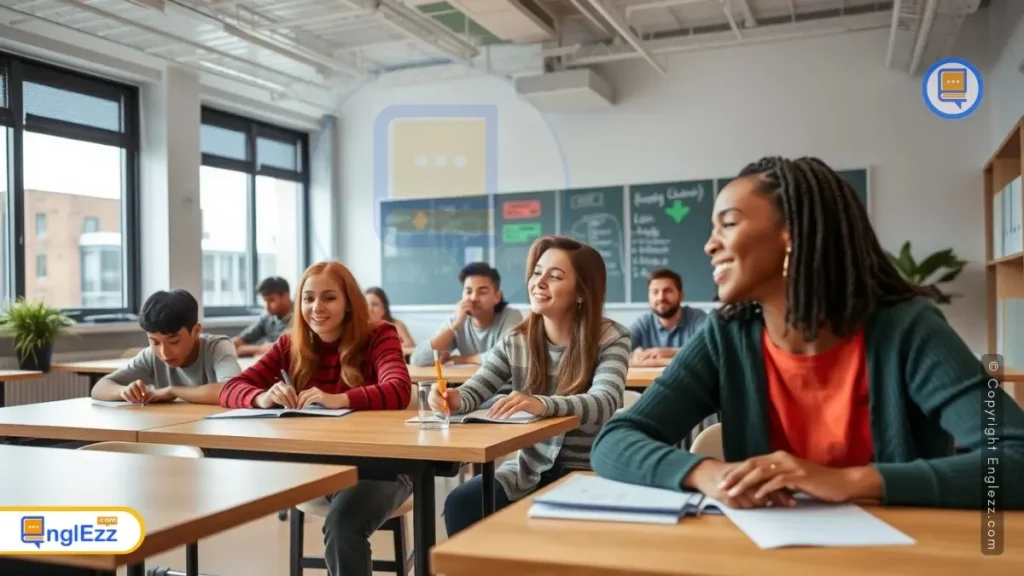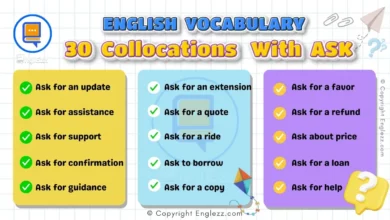In educational settings, the design of a classroom is far more than the arrangement of desks and chairs; it embodies a pedagogical philosophy that underpins student learning experiences. The dynamics within these spaces hold a profound impact on students’ comfort, collaborative spirit, creativity, focus, and productivity.
As educators delve into the realm of creating dynamic and engaging learning environments, they unearth an intricate interplay between physical setups and cognitive processes that shape the educational journey of learners.
Table of Contents
- Classroom Flexible Seating Solutions for a Dynamic Learning Environment
- Benefits of Flexible Seating Options
- Supporting Research on Flexible Seating
- Implementation Strategies for Educators:
- Embracing Flexible Seating Solutions
- Conclusion
- FAQs on Classroom Flexible Seating Solutions:
- Q: How can educators determine which type of flexible seating is most suitable for their classrooms?
- Q: Do parents play a role in supporting the integration of flexible seating solutions in schools?
- Q: What are some common misconceptions about flexible seating that educators may encounter?
- Q: How can schools address financial constraints when considering implementing flexible seating solutions?
- Q: Are there any risks associated with transitioning to a flexible seating model in classrooms?
Classroom Flexible Seating Solutions for a Dynamic Learning Environment
Not merely constrained by walls but rather shaped by them, classrooms harbor immense potential to either catalyze or hinder student engagement. Student seating arrangements are pivotal components that not only dictate spatial organization but also exert influence over social interactions and individual exploration. Therefore, exploring innovative seating solutions becomes imperative in unlocking classroom potentials to the fullest extent – paving the way for enriched learning experiences characterized by enhanced student agency and academic success.

In this vein, examining how adaptable classroom furniture may kindle a transformative atmosphere conducive to fostering vibrant exchanges of knowledge warrants meticulous analysis.
Benefits of Flexible Seating Options
Flexible seating options hold a multitude of benefits for students, enhancing their overall learning experience. By providing various seating choices, such as ergonomic chairs, bean bags, standing desks, and floor cushions, educators can cater to different learning styles and preferences within the classroom environment. For instance, students who prefer more movement while studying might gravitate towards standing desks or wobble stools, allowing them to maintain focus and comfort simultaneously.
Tailoring seating choices to student needs and activities can optimize classroom dynamics. For instance, creating designated areas for quiet reflection with comfortable bean bags or incorporating standing desks for interactive discussions can accommodate various learning preferences. By providing a mix of options like stability balls, floor cushions, traditional chairs, or even leaning stools, educators empower students to select the seating that suits their learning style best.
In contrast, individuals who excel in a cozy atmosphere could benefit from soft seating like bean bags during reading activities. This customization not only boosts student comfort but also empowers them to take charge of their learning journey by selecting the option that suits them best.
Furthermore, varied seating arrangements play a pivotal role in fostering collaboration among students. When seated in traditional rows, learners often have limited interaction with their peers; however, flexible seating encourages communication and teamwork.
- For example, circular tables or clusters of desks facilitate group discussions and project-based tasks effortlessly.
Through this setup, students engage in meaningful dialogues, share ideas effectively, and learn from one another’s perspectives. Collaborative environments created by flexible seating not only nurture strong interpersonal skills but also prepare students for real-world situations where teamwork is paramount.
Moreover, the introduction of flexible seating solutions can significantly enhance creativity within the classroom setting. A diverse layout with unconventional seating options challenges students’ conventional thinking patterns and inspires innovative approaches to problem-solving.
- For instance, having no assigned seats allows students to choose where they feel most inspired to work each day – be it at a cozy corner or a standing table – which can lead to increased engagement with the lesson material and spark creative insights.
This dynamic arrangement pushes boundaries by breaking away from rigid structures and encouraging dynamic thinking processes essential for cultivating creativity among learners from an early age.
Supporting Research on Flexible Seating
In recent years, educational researchers have increasingly turned their attention to the impact of classroom environments on student learning outcomes. Studies by Johnson and colleagues (2018) delve into the positive effects of flexible seating arrangements on student engagement levels. Their research indicated that students in classrooms with adaptable furniture exhibited higher levels of participation in discussions, group activities, and overall class interactions compared to traditional fixed-seating setups. This heightened engagement was attributed to the active choice and autonomy students experienced when selecting their preferred seating arrangements.
Regularly changing the seating configuration in the classroom encourages adaptability and keeps students engaged by avoiding monotony. For example, weekly rotations between small group setups for collaborative projects and rows for focused individual work can maintain a fresh learning environment. Additionally, trying out different arrangements based on lesson content or learning objectives can stimulate varied interactions among students and enhance overall participation.
Moreover, findings from a longitudinal study conducted by Smith et al. (2020) shed light on how flexible seating options can significantly boost student motivation throughout the learning process. By allowing students to move freely between various seating choices based on their individual preferences and needs, educators observed a marked increase in intrinsic motivation among learners. This enhanced drive to learn was linked to a sense of agency and ownership instilled in students regarding their learning environment, fostering a greater sense of responsibility for academic tasks and goals.
Furthermore, research by Patel and Rivera (2019) has emphasized the role of adaptable classroom furniture in promoting better focus among students, ultimately leading to improved learning outcomes. The study highlighted that varied seating options catered to different sensory preferences and comfort levels of students, reducing distractions that could hinder concentration during lessons.
By providing learners with ergonomic alternatives conducive to their individual needs, educators saw an uptick in sustained attention spans and active participation in instructional activities, signaling a positive correlation between flexible seating arrangements and academic achievement metrics.
Implementation Strategies for Educators:
Educators play a critical role in the successful implementation of flexible seating options to maximize classroom potential. When selecting suitable seating choices, it is essential to consider the specific needs of students and their age groups. Younger learners might benefit from options like wobble stools or bean bags to accommodate their energy levels, while older students may prefer standing desks or comfortable chairs with adjustable heights. By tailoring seating selections to student requirements, educators can create a more inclusive and engaging learning environment that caters to diverse preferences.
To effectively integrate various seating arrangements into lesson plans, educators should align seating choices with different activities and learning objectives. For instance, collaborative projects could be facilitated by grouping students in clustered desks or around shared workspaces, promoting teamwork and communication skills. In contrast, individual tasks might be best suited for secluded nooks or quiet corners equipped with privacy screens to enhance focus and concentration. By thoughtfully incorporating flexible seating options into daily lessons, educators can optimize student engagement and participation across varied instructional contexts.
Setting explicit guidelines regarding behavior and usage of flexible seating helps maintain discipline while enabling freedom of choice. Educators should communicate rules effectively to ensure smooth transitions between different seating options and avoid disruptions during class time. By emphasizing respect for both the furniture and peers, teachers promote responsible decision-making among students when selecting their preferred seats.
Managing transitions between different seating layouts is vital for maintaining a structured learning environment while embracing flexibility. Establishing clear routines and procedures for rearranging furniture can streamline the process and minimize disruptions during shifts between seating configurations.
Educators can involve students in setting up new arrangements to encourage responsibility and ownership of their learning spaces. By emphasizing smooth transitions between varied seating layouts, educators can foster adaptability among students while ensuring that instructional time remains productive and organized throughout the school day.
Embracing Flexible Seating Solutions
The adoption of flexible seating solutions presents a transformative opportunity for educators to cultivate dynamic and engaging learning environments. By prioritizing student comfort through customizable seating options tailored to diverse learning styles and preferences, teachers can create inclusive spaces that empower every student to thrive. Moreover, the promotion of collaborative efforts among students is heightened with flexible seating arrangements that facilitate group work activities, encouraging peer-to-peer interactions that enhance social skills and cooperative learning experiences.

Research consistently underscores the positive impact of flexible seating on student engagement and academic performance. Studies indicate that adaptable classroom furniture not only boosts student motivation but also fosters active participation in class discussions and activities. The flexibility afforded by varied seating options promotes a culture of creativity within classrooms by breaking away from traditional desk-and-chair configurations, prompting innovative thinking processes that inspire students to explore ideas from different vantage points.
Ultimately, by embracing flexible seating solutions, educators can optimize the potential of their classrooms to be vibrant hubs of learning where students feel empowered to learn and collaborate effectively. The versatility offered by adjustable seating choices transcends mere physical setups; it embodies a pedagogical shift towards holistic student-centered education that values individuality while nurturing collective growth.
Through thoughtful implementation strategies guided by research-backed insights, schools can establish an environment where every learner has the space and support to excel academically and socially.
Conclusion
In conclusion, the implementation of flexible seating solutions in educational settings holds immense promise for fostering dynamic and engaging learning environments that maximize classroom potential. By recognizing the impact of classroom setups on student comfort, collaboration, creativity, focus, and productivity, educators and school administrators can adapt their physical learning spaces to better cater to diverse student needs and preferences.
The benefits of flexible seating options extend beyond mere furniture rearrangement; they encompass a pedagogical shift towards personalized and interactive learning experiences that enhance student outcomes across various domains.
Moreover, as research continues to underscore the positive effects of flexible seating on student engagement, motivation, participation, focus, and academic performance, it becomes increasingly evident that flexibility in classroom design translates into tangible benefits for both students and teachers alike.
By embracing evidence-driven practices and actively exploring innovative ways to optimize learning environments through adaptable seating arrangements, schools can pave the way for enhanced educational experiences that prioritize student well-being and achievement.
FAQs on Classroom Flexible Seating Solutions:
Q: How can educators determine which type of flexible seating is most suitable for their classrooms?
A: Educators should consider factors such as student age groups, learning objectives, space constraints, and budget allocations when selecting appropriate flexible seating options.
Q: Do parents play a role in supporting the integration of flexible seating solutions in schools?
A: Yes, parental involvement can be crucial in advocating for dynamic classroom environments and understanding the benefits associated with varied seating choices.
Q: What are some common misconceptions about flexible seating that educators may encounter?
A: Misconceptions may include concerns about discipline issues arising from non-traditional seating arrangements or doubts about the effectiveness of these setups on learning outcomes.
Q: How can schools address financial constraints when considering implementing flexible seating solutions?
A: Budget-friendly approaches such as repurposing existing furniture creatively or exploring community partnerships for funding can help schools overcome financial barriers.
Q: Are there any risks associated with transitioning to a flexible seating model in classrooms?
A: While minimal risks exist related to logistics or initial adjustments by students and teachers, proactive planning and ongoing support can mitigate potential challenges effectively.
By following these tips, educators can create an inclusive and engaging atmosphere that fosters creativity, collaboration, and productivity within a flexible classroom setting.








